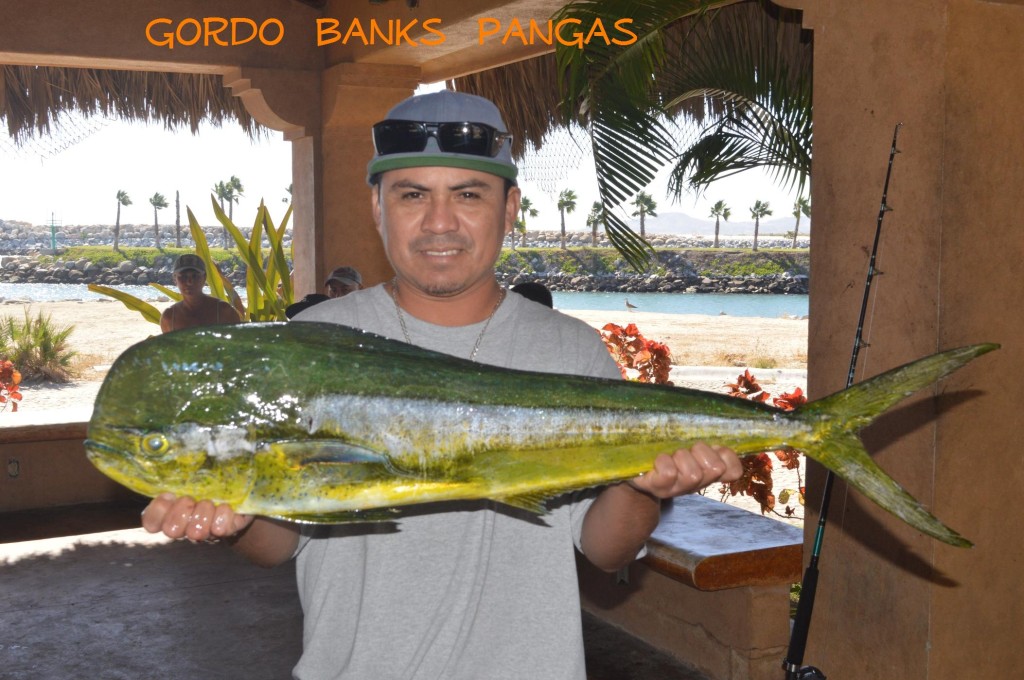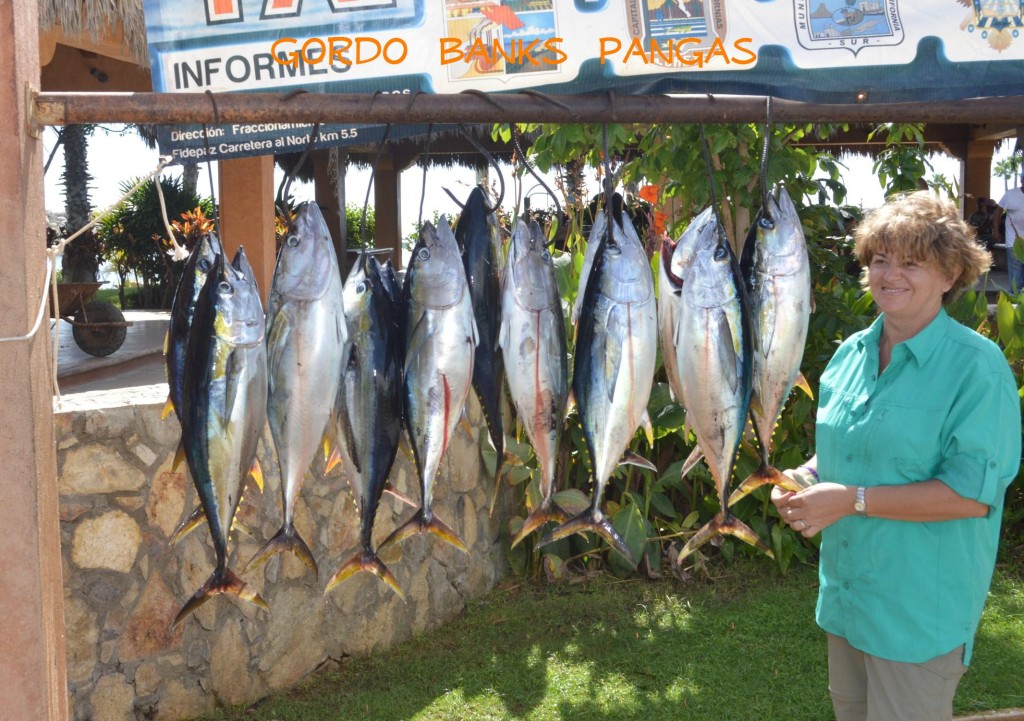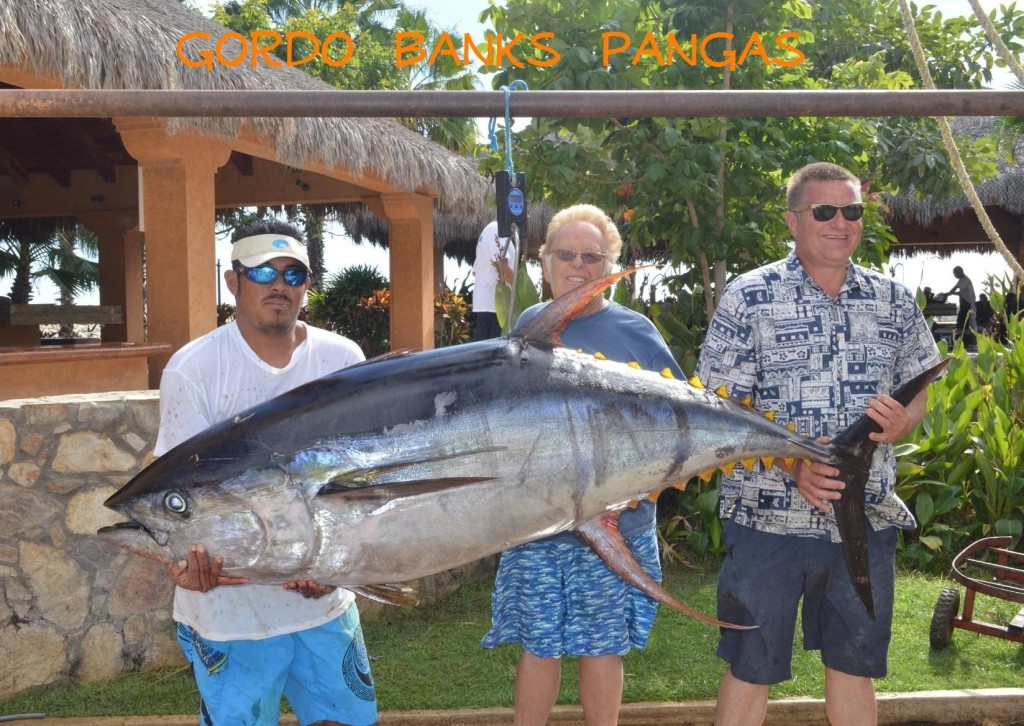December 28, 2013
Anglers –
We are all now enjoying Christmas Holiday times, with the last week of 2013 now upon us, families and friends all gathering to reminiscent of past times and to experience new adventures. What greater place than Los Cabos to bring in the New Year, where the winter climate has been very mild and vacationers are soaking up warm sunshine, participating in many outdoor activities.
We have seen ocean water temperatures now drop down into the 71/73 degree range, this is normal for the time of year, clarity has become more greenish in areas, but still the water is not what you would call dirty. Anglers were finding fair numbers of late season dorado spread out throughout the region, often times found very close to shore, where concentrations of ballyhoo and other baitfish have been attracting them. More often they are found in smaller sized schools, striking on lures, rigging ballyhoo and live caballito. Sizes averaged 10 to 15 lb., with some larger dorado to 20 pounds also accounted for.
Finding yellowfin tuna was much harder, with cooler currents and lack of sardina baitfish, no tuna action was being reported. There have been more school of Bonita moving in over the structure, these are the good eating variety, also have sharp teeth, almost like sierra, scrappy fighters on light tackle, readily striking on trolled rapalas and retrieved jigs, weighed up to 10 lb. Cooling water temperatures have brought in more sierra along the shoreline, these aggressive fish are hitting on small rapalas and hoochies, the action is best early in the morning, if new sources of sardinas are located that will really help the overall inshore fishing action. There has been shortages of caballito as well as no sardinas at all to speak of, many charters are relying on lures and rigged ballyhoo. We are anticipating reports of schooling mackerel moving in on the local fishing grounds, but this has not happened yet, it seems to be the season of changing baitfish migrations, will be interesting to see what happens during this cold water transition period, every season can be different.
Only a handful of wahoo are being reported, these elusive gamefish fish never really did go on a consistent bite this season, with ocean temperatures now in the low 70s, this is typically when wahoo start to migrate in a southern direction to follow preferred temperate currents. Though we do expect we will see a few more wahoo in the fish counts before they vanish for the winter, often these fish will bite later in the day during this period of colder water, sunshine seems to warm surface temperature up and gets them more active.
Anglers have found minimal success searching for bottom species, finding more triggerfish, skipjack and bonita than anything else. The month of December was windy more often than not, northern winds were persistent, with only a few days of calmer conditions mixed in, this stirs ocean conditions, scatters bait schools and makes it hard to find productive bottom action.
Billfish are scattered on the offshore grounds, no concentrations, striking lures and ballyhoo and caballito. Some striped marlin were being hooked while drift fishing baits deeper over the areas where they were seen occasionally free jumping of tailing on the surface. We all know this is the season where a huge striped marlin frenzy could develop on any given day, if any bait concentration is encountered be prepared for action.
The combined panga fleets launching out of La Playita, Puerto Los Cabos Marina sent out approximately 88 charters for this past week, with anglers accounting for a fish count of: 6 striped marlin, 3 wahoo, 85 bonito, 134 sierra, 15 roosterfish, 165 dorado, 5 hammerhead shark and 22 pargo.
Good fishing, Eric



